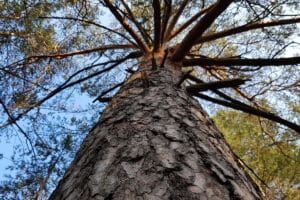Is timberland a good investment today, not so good, or too iffy to chance?
No one can answer with certainty, because the future can’t be described in the present as if it were the past. (And I won’t even go into the problems of getting a consensus on what we believe actually happened in the past.)
All economic forecasting models depend on building an accurate scaffolding of current economic relationships expressed in numbers—annual gross domestic product, prices of various fuels, employment, unemployment, housing starts, money supply and so on. Once a model is constructed, it can be asked to project what would happen at different points in the future when different changes are assumed in one or more variables. How, for example, would gross domestic product be shaped in 10 years if you assume a straight-line increase in oil price of 12 percent each year?
It’s useful to listen to the opinions of knowledgeable individuals who have jobs that ask them to risk money based on their models as well as their experience. With timberland investments, Chip Dillon, Managing Director of Credit Suisse, is one of those individuals.
So what does Dillon think about timberland investments?
The organizers of the 6th Timberland Investing World Summit Conference interviewed him prior to their gathering, to be held October 26-28 in New York City.
LANDFLIP.com and LANDTHINK.com are conference media partners.
In a word, Dillon appears to be generally cautious about the future of timberland investments for large institutional investors.
An investor, he says, can at least predict the volume growth of trees and the amount of sawlogs and pulp that standing timber will produce at different future points. Investors in common stock cannot anchor their expectations on anything as certain.
Prices for timber (stumpage) and lumber products at any future point depends on macro-economic factors such as growth in GDP, energy prices, employment, income, inflation, new housing starts and many others. The investor can project prices through modeling, but can’t know them with any certainty. The further into the future a projection is made, the more uncertainty about demand, supply and price.
Dillon also said that an investor can’t know how timberland might appreciate beyond its timber value as a result of what he called, “the HBU-lottery component.” If timberland is valued in the future as second-home or development property — that is, a Higher and Better Use — it will be valued higher than its timber resource justifies. Most timberland investors assume that timberland will become move valuable over time due to the HBU uplift.
The HBU uplift works best when timberland is purchased at a timberland price, not an HBU price.
Investors can get into timberland through ETFs or REITS, which offer the liquidity of stocks and no managerial responsibilities. Buying the physical property offers, in my opinion, better profit opportunity and less risk, but more work.
Dillon is not enthusiastic about wood biomass as a feedstock for electric-utility generation, even when the wood is cheap or free. This skepticism changes, he said, if utilities are required by federal policy to use wood biomass,or coal and nuclear are disadvantaged or backed out. He is more hopeful about cogeneration plants where wood waste and biomass are used to generate heat and electricity. He doesn’t see much current “success” for cellulosic ethanol. Pulp prices are not expected to be much affected by these markets during the next five to eight years.
He like others believe that timberland in the South has become overpriced relative to its timber value. He noted that 20 years ago, timberland was priced at, say, $250/A with a return of $25/A projected. Today, the return is the same, but the price is now about $1,700/A. A 10 percent return has fallen to less than 2 percent.
Dillon did not discuss smaller timberland investments and those for non-institutional investors.
Other conference speakers include:
Dr. Ann Bartuska– Deputy Chief for the United States Forest Service
Doug Donnell-Sr. VP Timberland Services for U.S. Trust-Bank of America Private Wealth Management
Donna Harmon-CEO at American Forest & Paper Association
Gerhard Dierterle-Head of Forestry Team at the World Bank
Charlie Daniel-President & Chief Investment Officer for RMK Timberland Group
Bhima Sastri-Program Lead, Forest and Paper Products for the US Department of Energy
Dr. Jack Lutz-Director of Global Research and Valuation at FourWinds Capital Management
John Keane-Executive Director for The Jacksonville Police & Fire Fund
Sandy LeBaugh-Director of Alternative Investments at TIAA-CREF
Reid Carter-Managing Partner at Brookfield Asset Management
Dr. Lars Laestadius-Timber Specialist Russia for The World Resources Institute
Jonathan Schrag-Executive Director at Regional Greenhouse Gas Initiative
Sue Ryan Goodman-Portfolio Manager at APG Investments
This content may not be used or reproduced in any manner whatsoever, in part or in whole, without written permission of LANDTHINK. Use of this content without permission is a violation of federal copyright law. The articles, posts, comments, opinions and information provided by LANDTHINK are for informational and research purposes only and DOES NOT substitute or coincide with the advice of an attorney, accountant, real estate broker or any other licensed real estate professional. LANDTHINK strongly advises visitors and readers to seek their own professional guidance and advice related to buying, investing in or selling real estate.









This is very good information. Thanks!